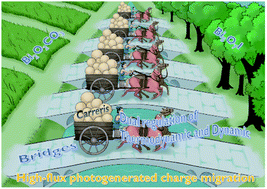Thermodynamic and dynamic dual regulation Bi2O2CO3/Bi5O7I enabling high-flux photogenerated charge migration for enhanced visible-light-driven photocatalysis†
Abstract
Herein, the essence of high-flux photogenerated charge migration for Bi2O2CO3/Bi5O7I heterojunction photocatalysts is revealed from both thermodynamic and dynamic perspectives. The appropriate energy band offset provides the thermodynamic conditions of photogenerated electrons and holes migration in opposite directions, which is derived from the lower valence and conduction band positions of Bi5O7I than Bi2O2CO3. Meanwhile, the dynamic conditions are provided by the interface electric field generated via the work function difference between Bi5O7I and Bi2O2CO3, which affords a driving force for the above-mentioned reverse migration of photogenerated electrons and holes. Moreover, the Bi–O chemical bond on the interface creates a charge transport bridge between Bi5O7I and Bi2O2CO3. By benefiting from the dual regulation of thermodynamics and dynamics and the charge transport bridge, the photocatalytic activity of the Bi2O2CO3/Bi5O7I heterojunction photocatalyst has significantly increased at least 23 times under visible light irradiation. This finding could also be applied to other fields to tune the optimal charge transport performance of heterojunctions.



 Please wait while we load your content...
Please wait while we load your content...